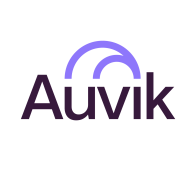

InfluxDB and Auvik Network Management compete in time-series database management and network management, respectively. Auvik has the upper hand with its comprehensive network management features for robust network solutions.
Features: InfluxDB supports high-volume operations, real-time monitoring, and time-series analytics. Auvik provides network visualization, real-time alerts, and automated mapping.
Room for Improvement: InfluxDB could improve ease of deployment for non-technical users, enhance scalability features, and integrate better with third-party tools. Auvik can focus on refining its pricing structure, expanding device compatibility, and improving alert customization.
Ease of Deployment and Customer Service: Auvik offers a cloud-based model for easy setup and responsive support. InfluxDB provides flexible deployments, including cloud and on-premises, with efficient support, although setup can be complex.
Pricing and ROI: InfluxDB has a cost-effective setup suitable for time-series data needs. Auvik incurs higher initial costs but offers significant ROI through efficient network management and reduced downtime.


Auvik is a network management software that provides real-time visibility and control over network infrastructure.
It automates network mapping, monitoring, and troubleshooting, allowing IT teams to easily identify and resolve issues.
With its intuitive interface and powerful features, Auvik helps businesses optimize their network performance and ensure smooth operations.
InfluxDB is open-source software that helps developers and enterprises alike to collect, store, process, and visualize time series data and to build next-generation applications. InfluxDB provides monitoring and insight on IoT, application, system, container, and infrastructure quickly and easily without complexities or compromises in scale, speed, or productivity.
InfluxDB has become a popular insight system for unified metrics and events enabling the most demanding SLAs. InfluxDB is used in just about every type of industry across a wide range of use cases, including network monitoring, IoT monitoring, industrial IoT, and infrastructure and application monitoring.
InfluxDB offers its users:
InfluxDB Benefits
There are several benefits to using InfluxDB . Some of the biggest advantages the solution offers include:
Reviews from Real Users
InfluxDB stands out among its competitors for a number of reasons. Two major ones are its flexible integration options and its data aggregation feature.
Shalauddin Ahamad S., a software engineer at a tech services company, notes, “The most valuable features are aggregating the data and the integration with Grafana for monitoring.”
We monitor all Network Monitoring Software reviews to prevent fraudulent reviews and keep review quality high. We do not post reviews by company employees or direct competitors. We validate each review for authenticity via cross-reference with LinkedIn, and personal follow-up with the reviewer when necessary.